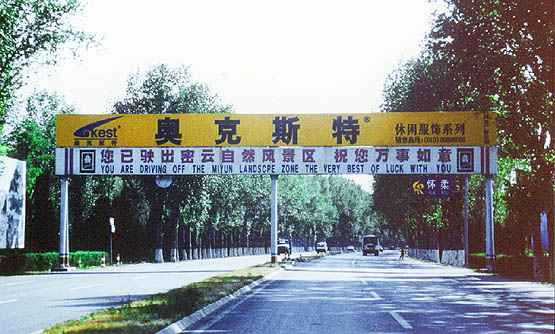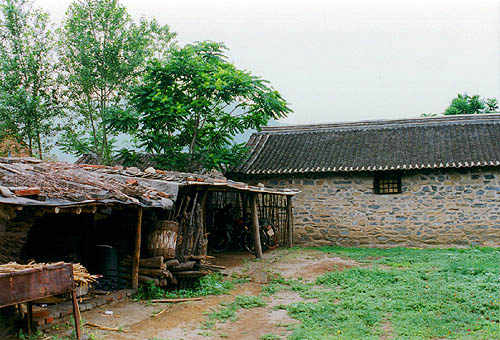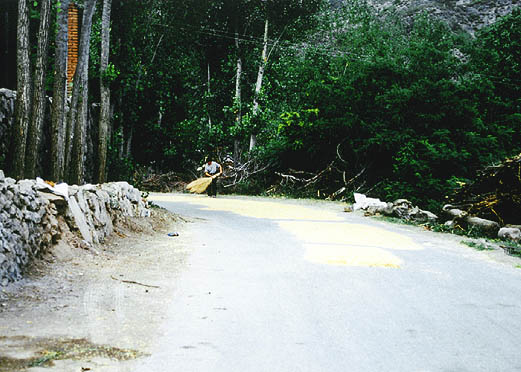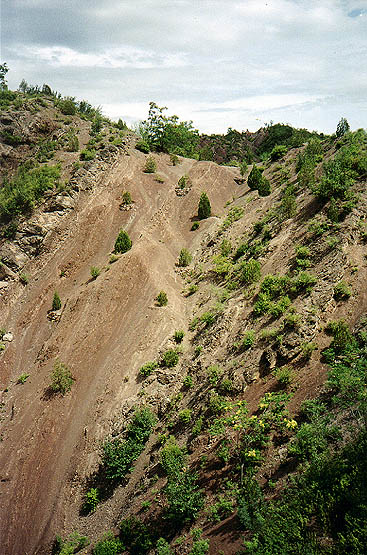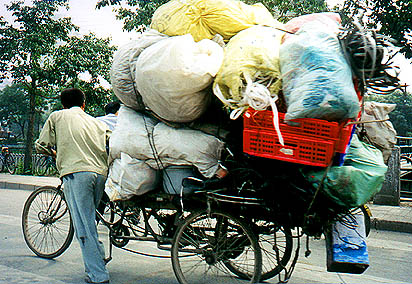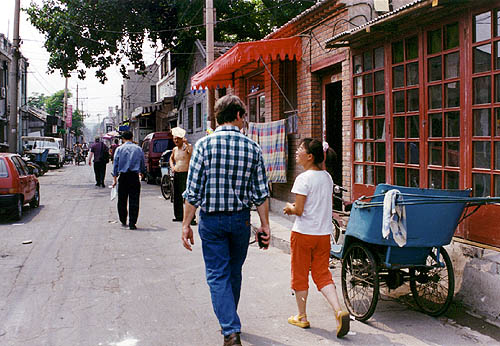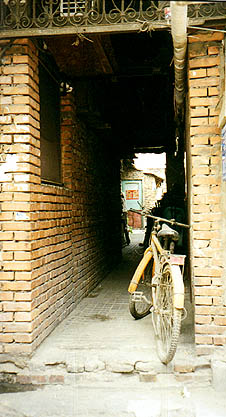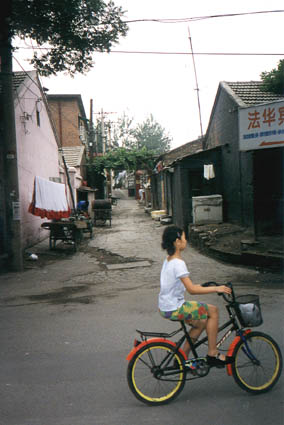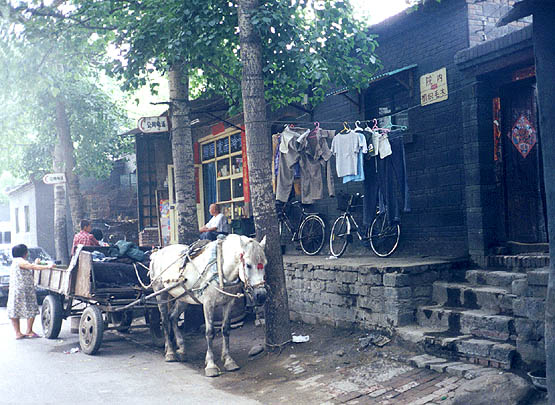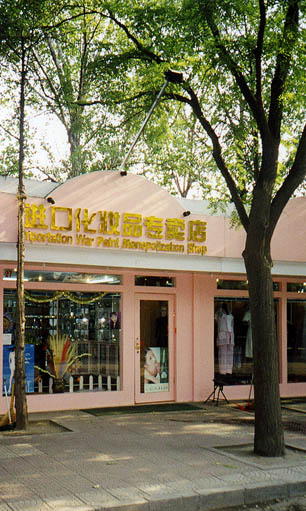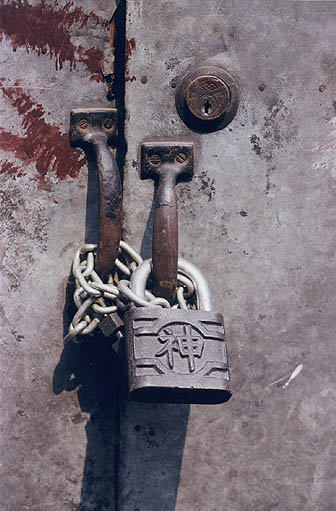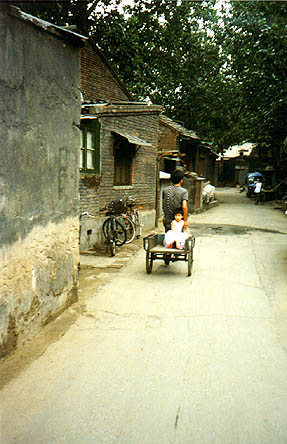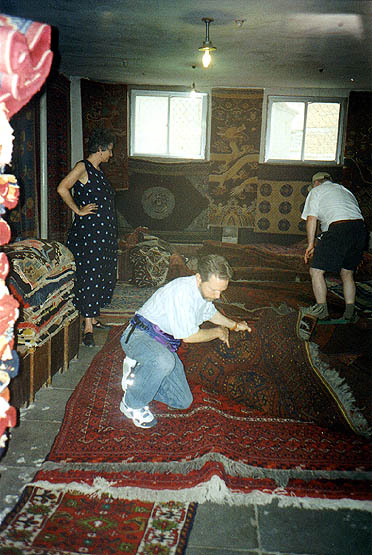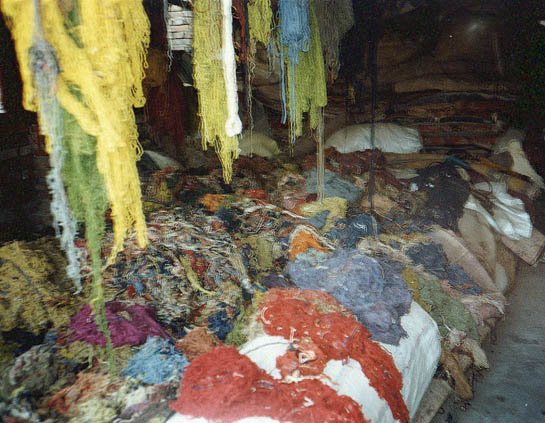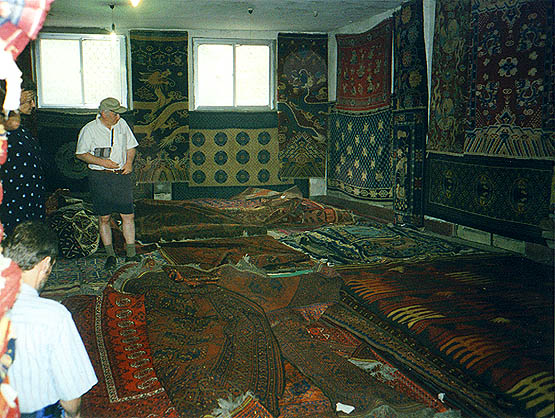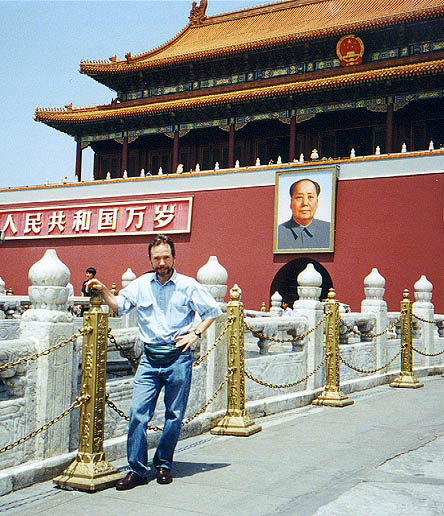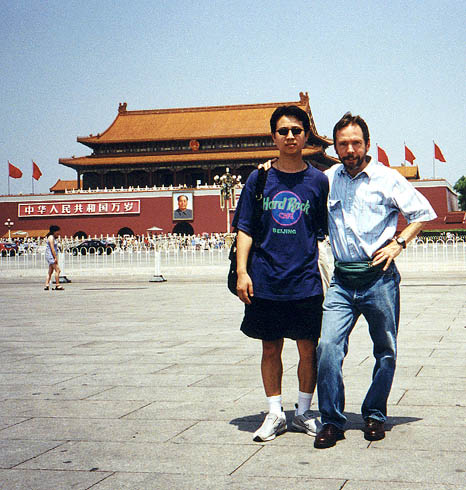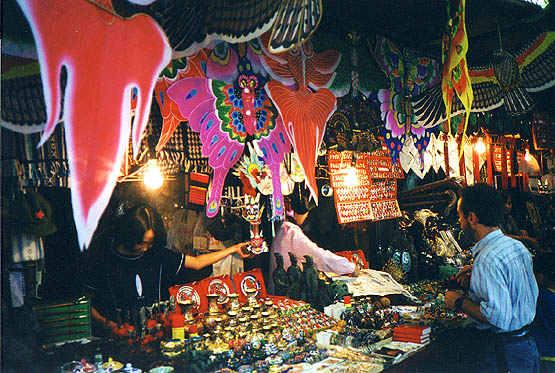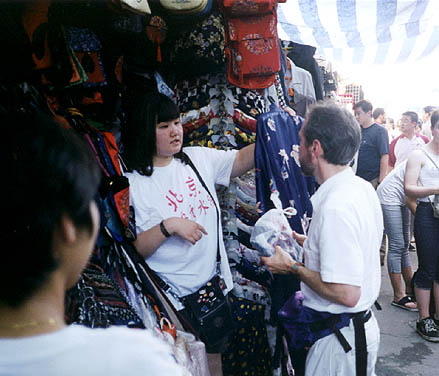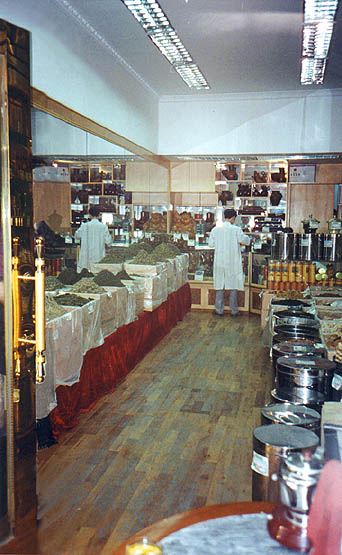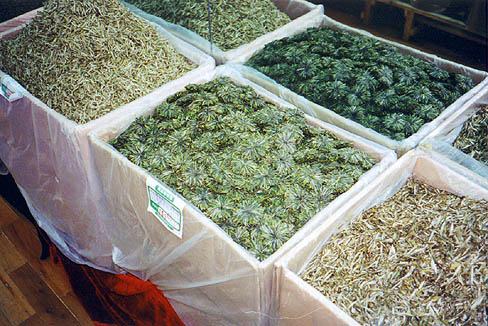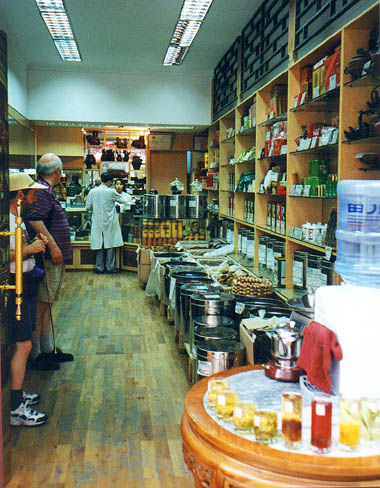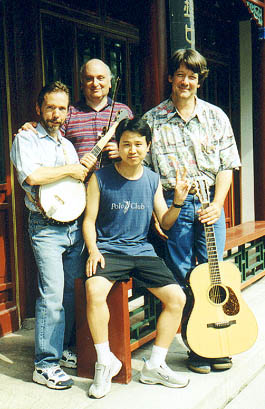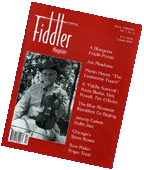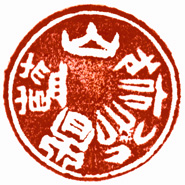 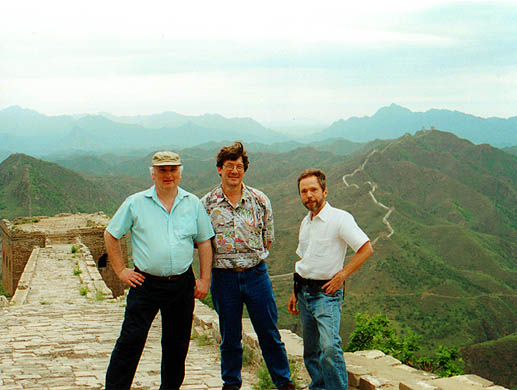
Here are the three of us posing for the obligatory shot on the Great Wall. When our plane approached Beijing, I was riveted by the look of the countryside. The landscape beneath the flight path down the northeast coast of Asia is much like barren desert areas anywhere, but the touch of humanity there makes all the difference. One thing I noticed was how small towns are laid out. In America, towns radiate from a center, but in China, towns are laid out in relatively tight parallel lines, like a hexagram. Another thing I noticed were big modern highways, interstates really, though with relatively little traffic. As I was taking this in, I noticed some other very prominent roads that weren't as straight as the interstates. Then I noticed they followed mountain ridges—how curious! Then it dawned on me that I was looking at the Great Wall. Simply amazing. You can see what I mean, in the background behind us here. It just goes on and on, and I am overcome with awe even contemplating the effort it took to build this thing, in the days before cranes and bulldozers and big trucks. They cannot be seen from outer space, despite the folklore, but you sure can see them from a 747 dropping down for a landing. Here are some shots of the countryside outside Beijing, enroute to Simatai.
 It is the fond dream of many Chinese people to own a little house in
the suburbs, with a white picket fence. Check this ad I snapped in the
back seat of a taxi: Mom and Pop and the one allowed child, a "Sold" sign
in the yard. Happiness is theirs, thanks to their homeowner's loan from
the Bank of China.
Here is one of those towns, like the ones I spied out the window of
the big plane. Tile and brick and various masonry define the northern Chinese
architecture. They may also define the southern architecture as well, but
I wouldn't know. I hope to go there someday.
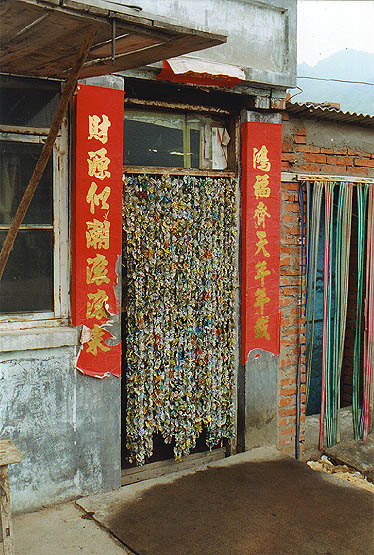 Enroute to Simatai and the Great Wall, we made a pit stop and sought
directions in one of those villages, where I saw this fly screen in a shop
door, made from recycled tin cans, a sort of shrapnel origami. Right next
to it is your garden variety plastic version. The sparkly metal was much
nicer.
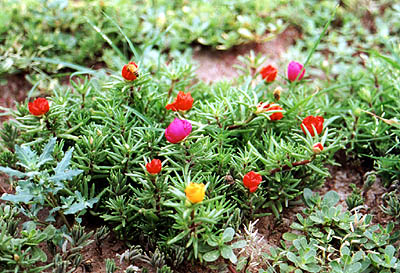 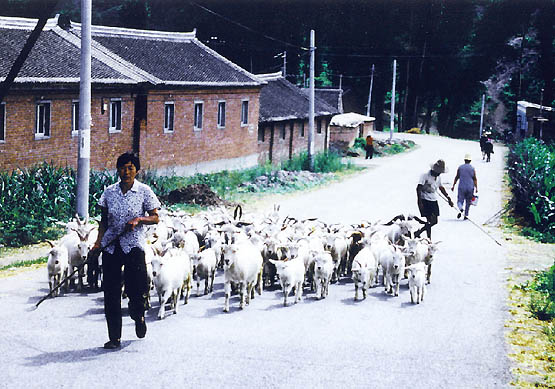
If you look carefully, you will see almost all the vegetation on the
precipitous slope is hand planted, with little handmade rock basins around
each plant. The entire countryside from Beijing to Simatai (better than
two hours drive on good roads) was entirely replanted. Obviously all original
vegetation was long gone, but the effort evident in the massive landscape
restoration was quite remarkable.
Meanwhile, back in Beijing...
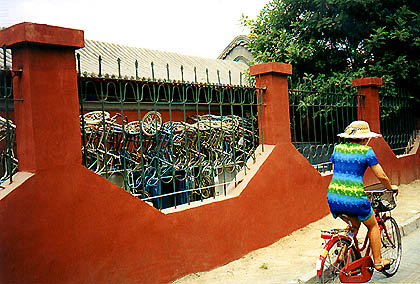
Here's a factory where these bike-trucks are made.
Streets in Beijing were great. We walked and walked, in every kind of
neighborhood. I think Heath took this shot of Amber and me.
Below, two different shots of the same thing at the same time. First
one was Heath's, the second one mine.
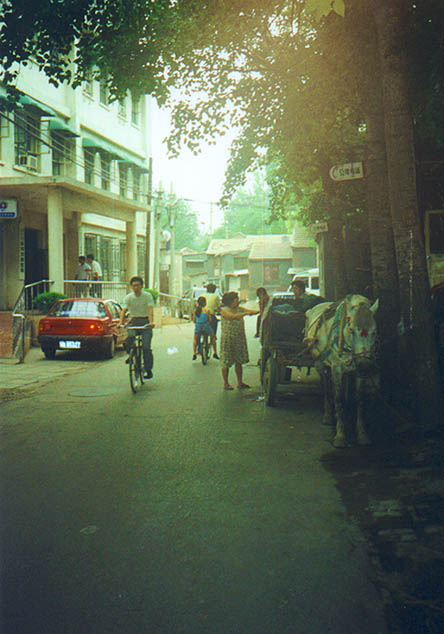
This photo doesn't show it well, but this store has a very unusual name.
See if you can guess what the Importation War Paint Monopolization Shop
sells:
Answer: women's face makeup.
Doors held a fascination for us all; Heath got some great shots of door
details:
 
We had to find a lock like this...
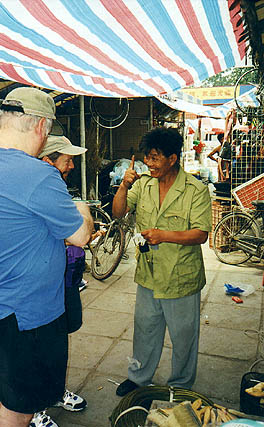 ...and this is the man who sold one to us.
Way Down the Old Silk Road. . . Here Suzanne Hale and Heath and Jody are looking through hundreds and hundreds of carpets. My favorites of all of these come from Xinjiang, way out west in the desert.
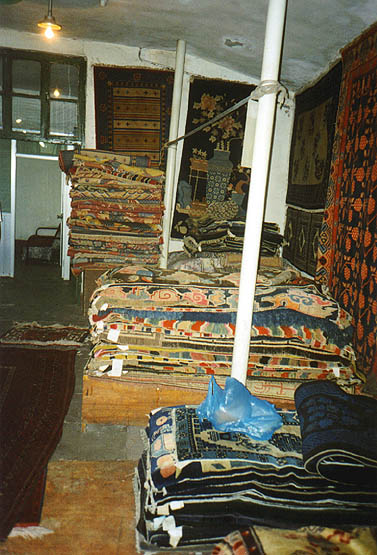
Pretty much all the carpets were one price, sold by the "yard."
Heath at the tomb of the Great Helmsman . . . . . and . . . . . Heath and Andy
On this Beijing excursion, Jody and I discovered that Heath indeed has
a Black Belt in Bargaining, which is why we were at this tourist kitsch
stall while Heath spent twenty minutes bargaining the merchant down from
40 cents to 38 and a half for some gewgaw. He made a concerted and successful
effort to corner the market in Mao alarm clocks, the Big Ben jobs with
bells on top and a little hand that waves the Little Red Book, rather like
a second hand.
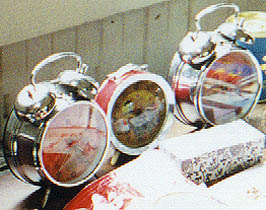 The Silk Market is near the embassies, and has all the westerners for customers. We were advised, by those in the know, to bargain for 10% of the asking price on things there. By contrast, this Qianmen neighborhood had almost no westerners, which made it curious to me that there were these kitsch stalls. Who buys this stuff? One time, while Jody and I were indulging Heath in this little obsession (meaning we were wandering around in the vicinity killing time while he was shaving a few kwai off a critical purchase) I was chatting with a young woman, who felt constrained to point out to me that it was Mao Zedong on that clock. I replied I knew very well who it was, everyone in the whole world knew his face and his reputation well. I asked her what she thought Mao would think of China today. She laughed out loud and merrily exclaimed, "Who cares! He's dead!"
All the tea in China
It goes without saying that tea is a real deal in China. This was a
rare moment with the shop empty, it was doing a land-office business when
we were there.
Recycle your trash
This is Wu Tong, who we knew as Andy, a gem of a guy who we chanced
to meet at the Dirt Market and who spent lots of time hanging out with
us, yakking, translating, and being a pal. Peace!
 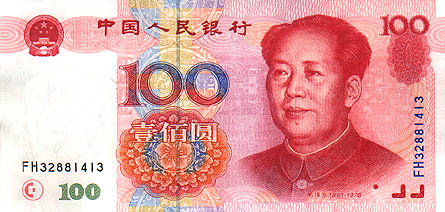
Well, that's all folks. Click here to back go to page three or page two or page one 
This site began as a practice version of an article I
wrote for The Old Time Herald, and that article has been published.
Click here to read Jody Stecher's
different and quite wonderful article which he wrote for Fiddler Magazine This little scrapbook is a work in progress. More pictures
are bound to come, and more jabber to go with them. Check in again.
last fooled with on 25 February 2001 |
